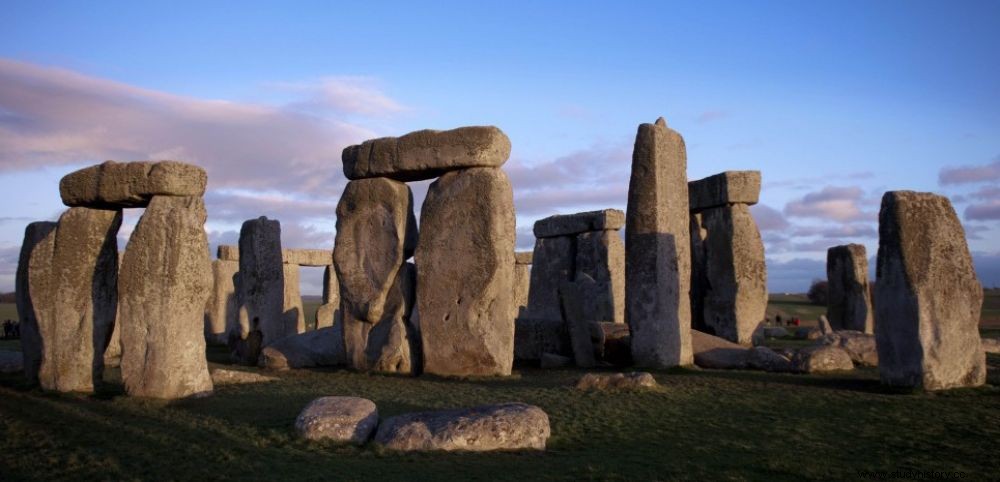Stones of the famous monument of Stonehenge come from Wales. They would have been moved to the south of England to the current site. A point of view far from being shared, in particular by a glaciologist.

Stonehenge, historic monument, splendid in this late afternoon light.
Would the stones of Stonehenge have moved like the trees of the forest of Macbeth ? Archaeological digs at two quarries in Wales have confirmed the origin of bluestones (blue stones) arranged in a circle and a horseshoe inside the legendary megalithic ring of southern England. These monoliths in dolerite (magmatic rock similar to basalt) and rhyolite (fine-grained volcanic rock) are thought to come from several natural outcrops located in the Preseli Mountains, a hilly landscape in the Pembrokshire National Park. In particular, the Craig Rhos-y-felin and Carn Goedog deposits in Wales where these stones are said to have been quarried in the Neolithic period, around 3400 and 3200 BCE respectively, before being erected at the Stonehenge site, at 250 km away, on Salisbury Plain, around 2900 BC. This long before the giant "sarsens", the monumental menhirs in local sandstone that make up the imposing circle of megaliths set up around 2500 BC. J.C.
A monumental move
To explain this mystery, a rather audacious hypothesis has been put forward. "It is likely that these stones were first used in a local monument before being dismantled and ‘transplanted’ at Stonehenge", said the very serious Mike Parker Pearson, head of the project at the Institute of Archeology at University College London (UCL), in the journal Antiquity . Kate Wekham, from the University of Bournemouth, who is taking part in the work, even considers that the remains of the dismantled monument could still be found somewhere between the two Welsh quarries. "Our geophysical surveys, and the analysis of aerial photos have delivered promising results" . It was the Neolithic men who – for a still unknown reason – would have carried out this monumental move.
These stones could have been moved by a huge glacier
For glaciologist Brian John, who has defended the idea of rock movement for many years, it is not the action of man but that of ice sheets which is in question. These immense frozen expanses could explain the "progression" of certain erratic blocks of blue stones to the Salisbury region. These stones would thus have been carried from the west from Wales by the movements of constriction and expansion of the immense glacier of the Irish Sea which existed during the last glaciations. This covered Scotland, Wales and Ireland. The blocks would then only have been cut at Stonehenge by Bronze Age men after they found them there. New archaeological excavations are scheduled for 2016.
